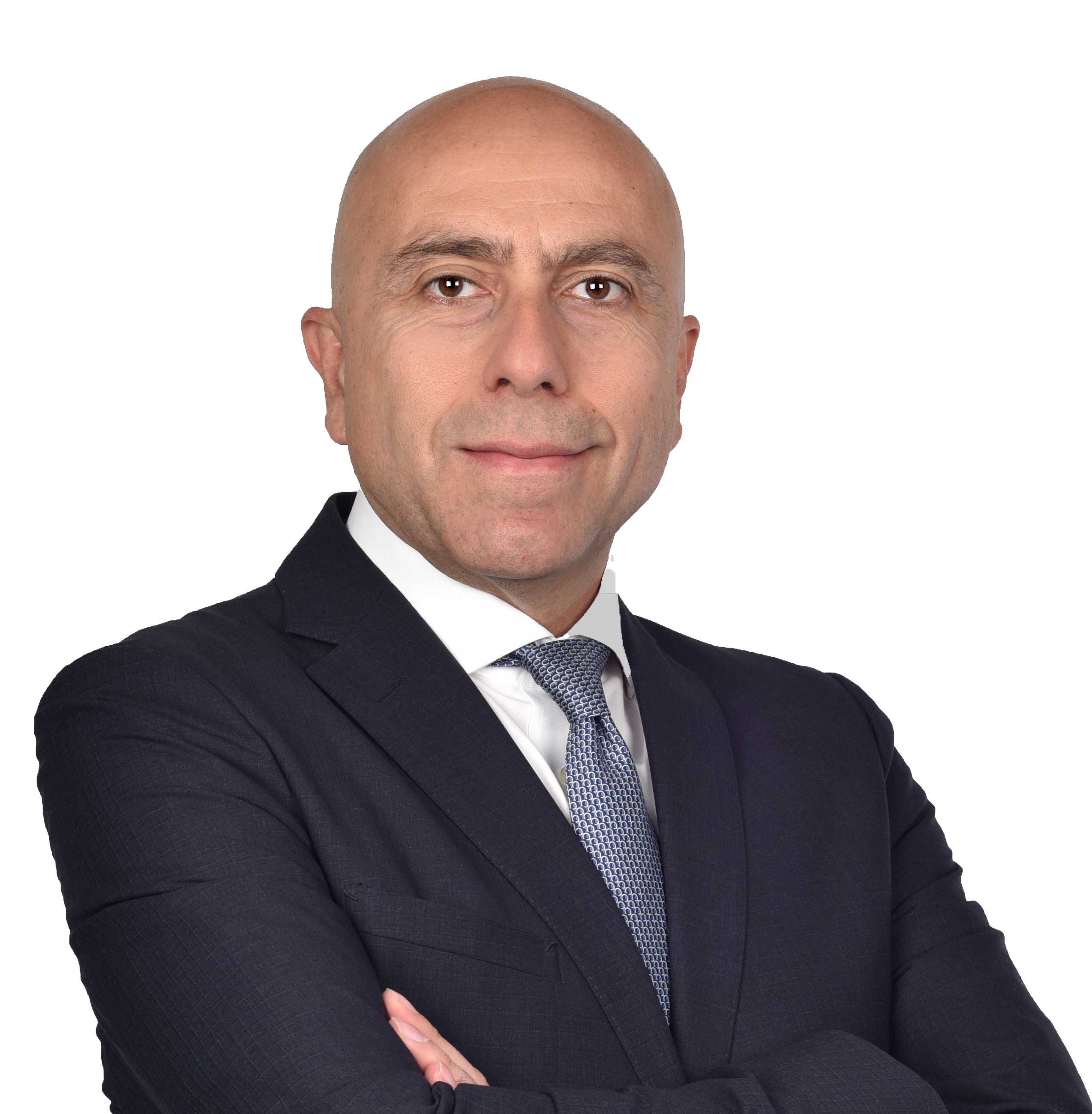
18min read
A conversation with Bilal Zein

Relishing conflict – a driver for change
Bilal Zein, Chief Operating Officer at Quanon Capital Ltd.
Bilal Zein, Chief Operating Officer at Quanon Capital Ltd, knows the answer. In 2001, Bilal set up a Single Family Office, discreetly serving a family of wealth, as well as overseeing their corporate family business and direct operating assets. He has 32 years of experience of managing multi-assets, including financial, legal and operational.
Passionate about wealth management, and with a great depth of knowledge in relation to family and corporate governance, he is ideally placed to explain the evolution that a business founder, principal or inheritor may take when moving from using the family business’s offices for support, to setting-up a separate investment office, or moving to a Family Office.
According to Bilal, it’s only natural that the founder, or principal of a business, leans on the company’s professionals for personal help from time to time. After all, the business is their life, and vice versa: the founder’s and the business’s affairs often overlap and intertwine. The embedded family office, as it is termed, may also provide support (both investment related and personal) to the founder’s family members that also work in the business. However, there comes a point when the interests of the family and the business are best served separately.
“In between, you have other services that the principal, but more importantly, the next generation, will start to look at. That spectrum ends-up splitting the family office space into investment offices for families, or more comprehensive services – fully fledged Family Offices for the families,” he says.
Getting to crunch point
“For some families it’s just easier to lean on the people that they’ve worked with and trust in the operating business: ‘While you’re doing all this work for the company, can you also do this work for my investments’, for example. That’s very typical. To be honest, I’m a good example. I originally worked for the family business,” Bilal confesses. “But it’s important to understand early on, that you have to have proper boundaries,” he stresses.
“It’s very easy to get blurred in terms of the conflict of interests. So, if I’m a lawyer for the business and the principal asks me to look at their personal assets, sometimes those assets may be used for the business and there might be a conflict. Am I looking out for the best interests of the company, or the best interests of the family when it comes to those assets? In the same way, if we’re looking at the financial returns, would the investment assets for the family, or the business come first?” he illustrates.
According to Bilal, the majority of wealthy families will have similar types of investments. “Real estate, financial assets and private equity, for example, can all be embedded in the family business, but it will be biased towards what the business understands and is good at. That might be a good thing to focus on, but it has to be done by design and not default,” he cautions.
“When you start moving out of the embedded family office you open up to other assets that are available for the family to look at and to invest in,” he explains. “That requires slightly different skill sets and a different focus. The CFO in the operating business is unlikely to be a skilled investment manager and may not have the requisite investment experience or expertise.” Bilal adds.
But the critical factor to understanding what type of family office structure to have, is to understand who the office would serve. This question becomes all the more important once the family grows to include multiple generations.
Understand what the family wants and needs.
“There’s no right or wrong about it, it’s just about design and obtaining the best outcome from that design for the family in question,” says Bilal. “Sometimes families decide that they want to stay in the family business, to focus on what they know best and concentrate their efforts and capacity to invest in building or expanding the family business. Other families decide they want to serve the members of the family who are not in management, to diversify and offer other services,” he explains.
Stand-alone Investment or Family Office?
“Typically, once the principal decides they want to look at investments to diversify for the family, they may choose to focus on just one or two asset classes. I’ve seen a lot of such offices,” says Bilal. “They become expert in that particular asset and it becomes an investment office for the family more than an embedded family office. For example, some will focus on real estate, whereas another family might concentrate on logistics. Effectively, it is a stand-alone asset manager for the family,” he explains. “But, that is only achievable if there is enough scale,” he adds.
The basic and most common example is with financial assets, according to Bilal. “It’s the easiest because the providers offer support, whether a private banker, a financial institution or a multi-family office, and they are the easiest to benchmark,” he says. “If the range of the assets under management goes from a few million pounds to one hundred or two hundred million pounds, it could be done through the private banks or asset managers. The lower the level of asset – under two hundred million pounds, say, the more difficult it would be to do it in-house,” he cautions. “It would cost more and there would be less incentive for a manager to run your portfolio.
“The attraction for talent is based on reward – that’s the challenge,” says Bilal.
“Families can save on private banker or investment institution charges by doing it in-house, but then they would incur the cost of running the office and run the risk of having the bias of one manager, who could at some stage decide to leave – you have to keep that in mind as well: the succession,” he adds.
“I’ve been serving one family for twenty-plus years, but I’m not going to be around forever, so you need to think about that.”
Another aspect to consider is investment advice from within family itself. “Some families will have among their members, perhaps from the next generation or an in-law, someone who’s financially driven and has the relevant skill set,” suggests Bilal. “That might dictate the family putting the investment in-house. That comes with some risk of bias, whether conscious or unconscious, through the nature of the family relationship, and not to forget the major risk of members of the family deciding to separate from the family or divorce.” he adds.
However, it’s not only financial assets. “There’s also real estate, or venture capital, for example. A member of the family might take that on and become the asset manager. The totality of the asset allocation and the investment policy would be skewed towards the skills, or driven by the preferences of the family members. That’s something that I’ve seen a lot,” says Bilal.
A Family Office involves additional services
“As the family grows you may find you have members, or the next generation, who are not involved in the business or the investments and the question arises: what are you going to do for the rest of the family?” asks Bilal. “This is when the family has to make a decision – does it continue being a family, staying together and putting all its assets and services under one umbrella, and preferably professionalising that approach; or split and everyone goes their own way?”
According to Bilal, if the family decides to stay together, it has to ask questions such as, who is family and how do you treat the different generations, in-laws etc. “The first step is designing what the family wants, step two would look at how to deliver that to keep the family together, and then step three would go into the services required from a Family Office, or to look at outsourcing – they might decide they don’t need a family office,” Bilal suggests.
Services could include managing the financial assets, legal, tax accounting, compliance, structuring, security, lifestyle services, family education, reporting, succession planning and family governance.
Ultimately, the Family Office needs to have a strategy, a clear understanding of what the office will be delivering, to whom, and in what format, and then to have a proper business plan to share with the family.
“Like everything in life, those are not static,” he continues. “Once you have the design, you have to keep on reviewing the services or the structures that you have put in place for the family, because things change in the family – you have new generations, you have different members of the family moving to different jurisdictions and not to forget the change in the environment (tax, political, social),” Bilal explains.
However, it’s not all about wealth planning. For some families the excitement comes not from the investments but from philanthropy.
“The Family Office can keep on top of the execution for the family and be their tool,” says Bilal. “The family will agree the themes that they’d like to support and who would be doing what, and the role of the Family Office would be either to execute the plan, or at least to give support to the family, and manage the reporting.” Bilal stresses that linking the non-financial aspects with the financial aspects is one of the most important elements of the reporting. He says: “The family needs to understand, if it has the means and the tools to deliver the best support.”
“Technology is moving very fast in this space,” explains Bilal. “Some twenty years ago, very few providers offered technology to support the Family Office. Excel and PowerPoint were, and to some extent still are, the main tools.”
“The interface with the family is important – most of families now require reports on their hand-held devices, not even on their laptops. There are plenty providers and each provider meets the needs of the families, more or less, so sometimes you have to complement with another provider.
“The challenge for families is to design what they want first and how they want it to be delivered. Then the Family Office would look at the providers and do the proper due diligence to understand which provider will give the best solution for that family. Some providers are at the early days of developing a product, or they are not suitable for the family such as, tax modules,” Bilal warns.
“At the moment tax is a specialist tool. Most families include different generations and different jurisdictions and for that you have to have specialist tax input,” he says. “Having one tool that includes tax as well as asset reporting, lifestyle reporting, reporting on collections, and on all of the family’s assets, becomes a little bit challenging. There are tools that claim to do it, but you have to do the due diligence and understand whether those tools will cover the requirements, especially if you have a complex family,” Bilal says. “Moving to the cloud has made the challenges formerly experienced with servers and server locations a little bit easier, but from a tax perspective it’s still not very clear,” he adds.
Adopting new technology is difficult
“It’s a proper project that needs to be carried out by a team,” says Bilal. “The Family Office would be a good place to start from, at least to understand the needs and to pull in the resources as needed to do the project. It’s lengthy and costly, but there are rewards at the end, but there are costs first!” he warns.
“You need to have a proper proposal,” he continues. “To do that, you have to first understand the audience: who would see what, how frequently and how – on their phones or a PDF report? Some family members will still prefer a PDF, so you have to look at that. You have to have a proper specification before going to the market and do your due diligence. In one particular instance, a provider had a fantastic service, but when I looked upwards into the ownership it wasn’t something that the family would feel comfortable with,” Bilal confides.
“A provider may only be able to give you 80 per cent, and you have to be 100 per cent comfortable with the 80 per cent, rather than going to a provider that claims they can deliver 100 per cent, by outsourcing, or by doing things manually for you,” he explains. “The family may prefer to keep that 20 per cent in-house to keep confidentiality, or avoid the risk from other challenges that the family might run such as, tax. It’s an 80:20 rule.”
According to Bilal, another element that the family office should look at before embarking on a new technology project is the exit. “It’s painful to move from one provider to another. You have to think about the exit before getting into a marriage with that provider,” he recommends.
Confidentiality is a key concern when deciding on the structure of the Family Office.
“Different families will have different structures, but one structure that works well would be to keep the Family Office completely separate from the assets,” recommends Bilal. “It’s not a GP LP (limited partnership), but a standalone entity which has very clear boundaries in terms of what it does. The assets would usually be put into different structures for the family early on, so the entity becomes a management company, in practical terms,” he explains. Keeping assets separate from the Family Office maintains confidentially because any information it publishes, as a management company, will just be costs. “Ideally it owns nothing, so that it could be movable, one day in London, one day in Singapore, and one day in Switzerland, depending on the tax and the needs of the family,” Bilal adds.
“Another structure would be to embed the Family Office in the trust structure of the family,” Bilal suggests. “Proper homework needs to be done to understand the structure of the family and how is the wealth structured and consequently, how to best structure the Family Office. That’s the homework that needs to be done specifically for each family. There’s no one size fits all,” he adds.
How should a Family Office charge for its services?
“To avoid any conflict of interest, it should be a cost plus model,” says Bilal. “The minute you have any complexity it will be challenging not to have a conflict of interest. In my experience it should be a cost plus model and it should be a standalone based on agreed services. If those services are provided equally to all members of the family it’s easy, because it’s a direct charge to the structure of the family,” he explains. “However, if you have distinct needs for specific members of the family, the costs should be agreed at a family level first, at the family council or meeting. Services and their costs have to be clear and measured. It has to be transparent and it has to be reviewed and revisited periodically to make sure that it’s still fit for purpose and that everyone is happy with that,” recommends Bilal.
Performance also needs to be measured, but how can you measure intangibles?
“That’s the challenge for the Family Office that is serving many generations and providing different services,” says Bilal. “Measuring the performance of the financial aspects is easy – just look at the returns! But how can you reward the Family Office team members who deal with a family member’s household, or help with an insurance claim, or a construction plan for one of the family’s personal properties? That’s more difficult,” he admits.
“It all comes back to my initial point: the Family Office should have a business plan and be run like a business,” says Bilal. “Performance against the plan and against the objectives agreed with the family should be part of the reporting tool at the end of each period. It could be quarterly, bi-annually or yearly. The Family Office should sit with the family and have a strategic review of what has been done against what was designed and that feeds into the reward of the Family Office,” he suggests.
“If you are an investment office, performance and reward will be linked to the performance of your assets – a financial asset model similar to investment bankers. However, if the Family Office is offering the full scope of services, then reward should be completely, to my mind, discretionary,” says Bilal. “That’s because even as a professional, you naturally have bias towards the classes of asset that would reward you more. It should be discretionary at the end of each period, decided on a one-to-one, or one-to-many basis and based on general performance rather than asset performance because the Family Office team member might have served the family on something which is very important to them, but on which you cannot put a monetary value.
The family could agree on a range ahead of time that the bonus could be a percentage, or open – depending on the family. I’ve seen some families that don’t have any range, so it’s completely discretionary: one year it could be ten per cent, one year it could be 200 per cent, that’s up to the family to decide,” explains Bilal.
Could a family member run the Family Office?
Yes, says Bilal, but it should be based on merit. “It depends whether the family member has enough experience. That experience could be gained by working elsewhere before coming to run the Family Office, or it could be within the Family Office but with a clear path, not just coming straight into the top job. The remuneration has to be based on performance and there should be clear performance management. You don’t get to have the privilege of managing the Family Office just because you have the surname of the family,” says Bilal.
Three key things for a successful Family Office:
1. Understand your audience – that’s critical to having a successful role. Understand who they are, what they want and their objectives. Understand the assets and the wealth, and have a clearly designed path for the where that wealth is going to go and who will be part of that journey.
2. Always be ahead of the game for the family – always have a solution. Plan for different scenarios so you can be there, not just for the family but for the assets as well.
3. Be flexible and to revisit the plan because life is not static – just because you did something last year doesn’t mean it’s still fit for purpose today. You have to keep on reviewing and making sure that you have the resources in-house or outsourced, to serve the needs of the family.
Bilal concludes: “Covid was never in anyone’s plan. I had scenarios for an emergency, or disaster, but not global lockdown. We had to react quickly. But that’s the beauty of having a Family Office: the flexibility that we can bring to the family.”
















